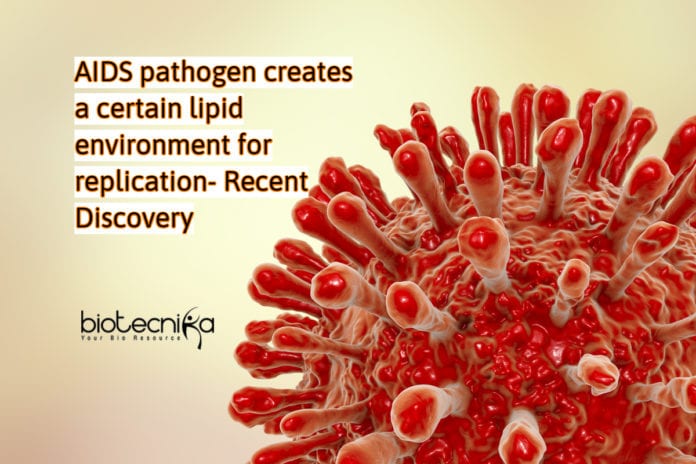Multiplication of AIDS pathogens studied using High-Resolution Imaging
In order to treat diseases better, it is important to understand how they arise. An European team led by Prof. Christian Eggeling from the Friedrich Schiller University Jena, the Leibniz Institute of Photonic Technology (Leibniz IPHT) & the University of Oxford has now succeeded in using the high-resolution imaging technique to make visible to the millisecond how the HIV spreads between the living cells and also to find out which molecules it requires for this purpose. Using a superresolution STED fluorescence microscopy, the scientists provide direct proof for the first time that the AIDS pathogens create a certain lipid environment for its replication. Christian Eggeling said that his team has thus created a method for investigating how this multiplication can potentially be prevented. His team has published the results of their research study on the multiplication of AIDS pathogens in journal Science Advances on October 2, 2019.
The scientists focused on the sluice through which the Human Immunodeficiency Virus emerges from the cell after having infected the plasma membrane of the host cell. These viruses used the protein Gag as a marker, that co-ordinates the processes involved in the maturation of the virus
. Christian Eggeling explained that where this protein accumulates, the decisive processes take place that leads to the HIV releasing itself and infecting other cells. In order to find these, the scientists examined the diffusion at this budding site of the HIV virus particle. Scientists found out that only certain lipids interact with the virus. Although these lipid environments were already known in principle, the team was able to prove this interaction directly in the living and infected cells for the first time.Christian Eggeling said that this provides a potential target for antiviral drugs. he further added that knowing which molecules the Human Immunodeficiency Virus needs in order to leave the cell & multiply is a crucial prerequisite for investigating how this can actually be prevented. With this technology, researchers can now follow this direction. Christian Eggeling and his research team now want to develop antibodies that attack precisely these molecules and thus suppress the spread of the Human Immunodeficiency Virus.
Eggeling, describing his research program, said that the team not only wanted to study the antibodies from a medical point of view but also wanted to find out how their biophysical interaction can be used to enhance their efficacy. And for this purpose, his team analyzed biological processes namely the interaction of cells and molecules with the help of physical parameters such as diffusions. One year ago, the physicist moved from Oxford to Jena. And in addition to his professorship for Superresolution Microscopy at the university, he heads the research department of Biophysical Imaging at Leibniz IPHT. He also leads his research team at the MRC Human Immunology Unit & at the Wolfson Imaging Centre of the Weatherall Institute of Molecular Medicine at Oxford University.
Eggeling combines the spatial superresolution fluorescence microscopy techniques with methods that enable the movement of labeled molecules to be tracked in real-time in order to understand how diseases actually develop at the smallest molecular level. This enables him and his team of scientists to investigate individual molecules, for example, in cell membranes in living cells spatially and temporally. This enables the research team to reveal cellular mechanisms at the molecular level that is far too fast for previous investigation methods and also run on spatial scales that are far too small, he added.
Christian Eggeling has already done studies on new superresolution fluorescence microscopic techniques at the Max Planck Institute for Biophysical Chemistry in the team of Stefan W. Hell. Together with Eric Betzig & William E. Moerner, Stefan Hell received the Nobel Prize for Chemistry in the year 2014. And in Jena, Eggeling is now working closely with the biologists and physicians to find out how these methods can be actually used to detect diseases earlier and more accurately and possibly even prevent them.






























